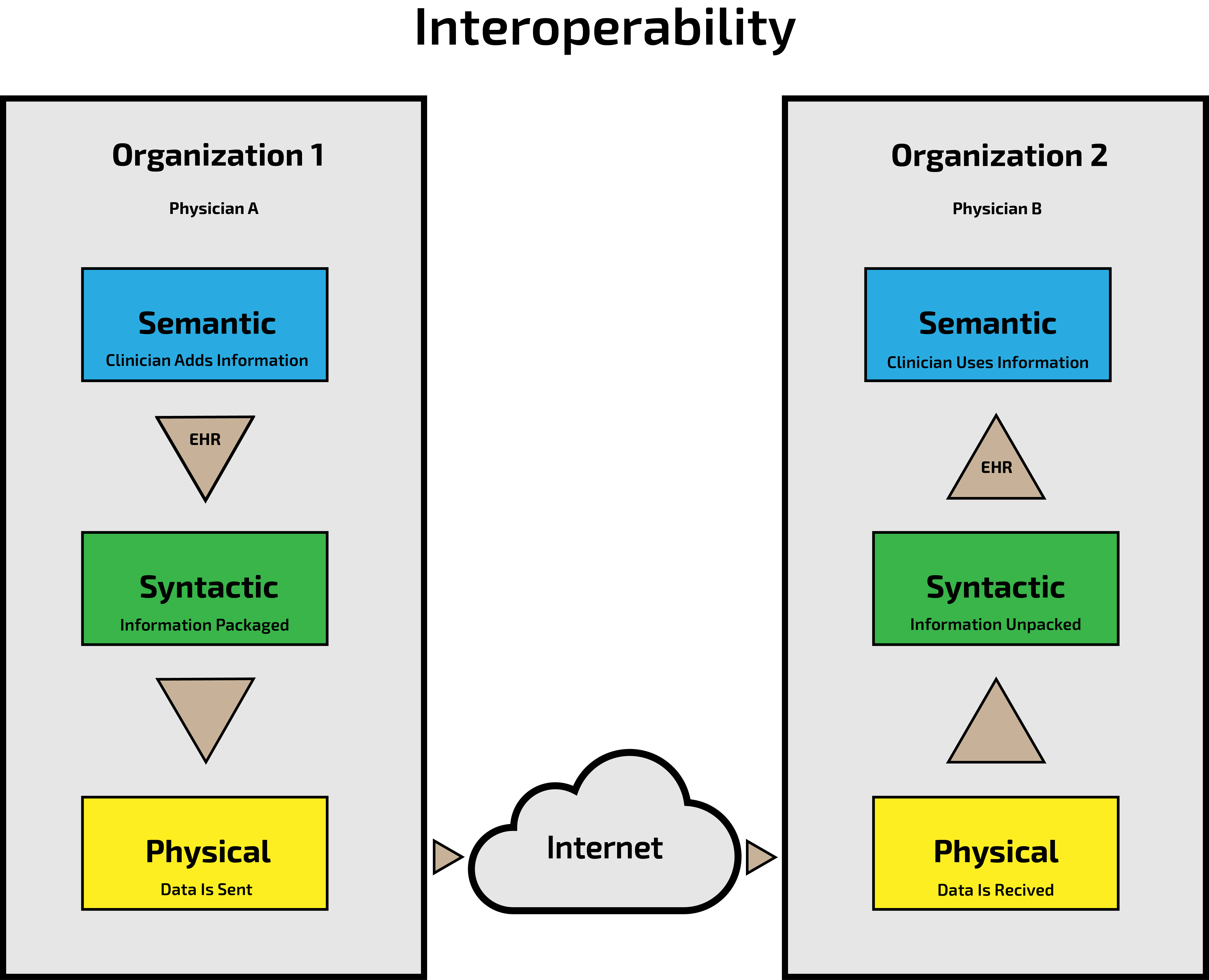We have written about interoperability in medicine in previous posts. Our technical experience includes interoperability projects, but we have not worked on interoperability in Healthcare yet. We wanted to get a better understanding of the current state of interoperability in Healthcare and how it relates to the larger fields of communications and standards. We want to understand the unique obstacles in Healthcare and add some constructive ideas to the conversation.
The concept of interoperability is not industry-specific. It is a general term, associated with communications, technology, and standards, that comes with its own history, concepts, and research. These general ideas have been applied successfully in some industries already. For example, telecommunications interoperability has provided a variety of solutions that allow us to communicate with each other worldwide. The interoperability of the banking industry allows us to withdraw money and make purchases almost anywhere. Given these accomplishments in interoperability, it seems possible to devise a solution to share health information.
Here, it is helpful to establish common terminology, starting with the most general definition of interoperability as the ability to send and receive communications and make use of the information. It is helpful if some groups can communicate, but much more powerful if everyone can communicate. In order to achieve this, a common standard must be agreed upon and implemented. Often, but not always, the definition and agreement are governed by a standards organization. For communications standards, such organizations use terminology and a framework that originated from simulation theory to define the different levels of interoperability that systems can have. A simplified version of this framework is as follows:
- physical - the physical medium that is used to transfer data (example: US postal service, fax machine, Internet, carrier pigeon)
- syntactic - the organization of the data in the message. you could think of this as designing a form. you know where to find the patient name, address, physician notes, lab tests, etc - because they are all located in standard places in the data
- semantic - the agreed-upon vocabulary - so that everyone knows what each word means. for example, notes could say ordered “blood test” instead of more specific and clear “ordered CBC”
While this is the commonly used, minimal framework, Healthcare Information and Management Systems Society (HIMSS) has relabeled these as foundational, structural, semantic, and (plus) organizational interoperability, but it is basically the same thing. The image below illustrates how the framework would be used in Healthcare:

You can download this diagram as a pdf here
Another way to understand the framework is with an analogy: for example, the intermodal shipping container. Bananas (the semantic part) are put into the standard intermodal container (syntactic part) to be shipped. The container is moved by truck, train, or ship to its destination (this is the physical part). The container arrives over the expected physical medium. Then because it is in the standard intermodal container, we understand how to receive it. We have a shared syntax that items go in the box, so we understand that we need to unpack it. Finally, let us say that our common terminology is that bananas are an ingredient in banana bread, so we know what to do with them - make banana bread.
The biggest obstacle to implementing these levels of interoperability is agreeing on a common standard. The existing data transport standard, the Internet, is already in place for physical interoperability. Syntactic interoperability is not fully agreed upon but a standard is emerging called Fast Healthcare Interoperability Resources commonly known as FHIR (and pronounced "fire"). FHIR is becoming widely adopted by healthcare systems and clinicians. It is also being promoted by the Center for Medicare and Medicaid Services (CMS) and the Office of the National Coordinator for Health Information Technology in new interoperability guidance published earlier this year.
While physical and syntactic solutions are for the most part in place, semantic interoperability does not appear to be solved. Semantic standardization gives common meaning so that any provider will read and interpret the data in the same, correct way. This is a topic that we will investigate and discuss further in future posts.